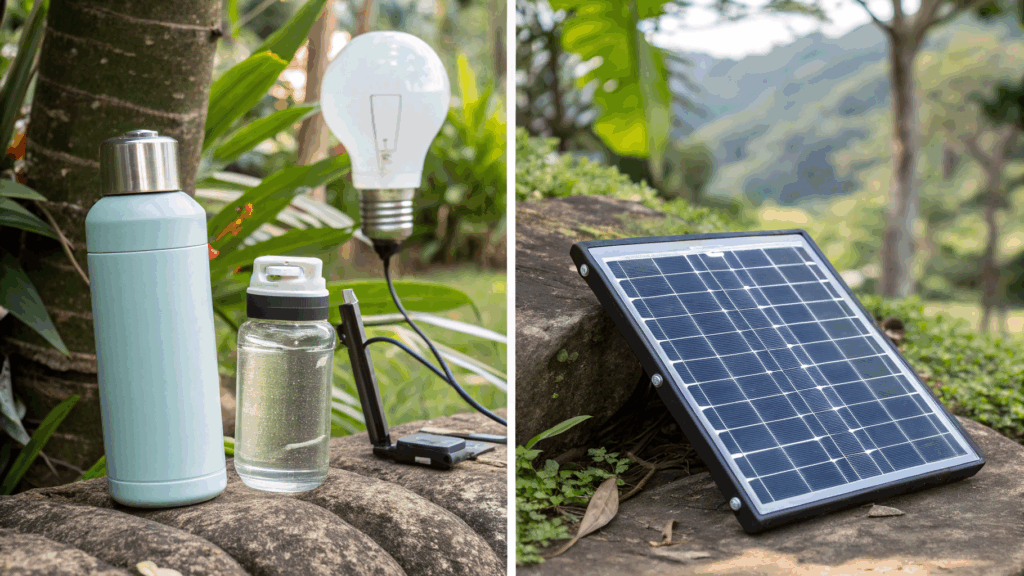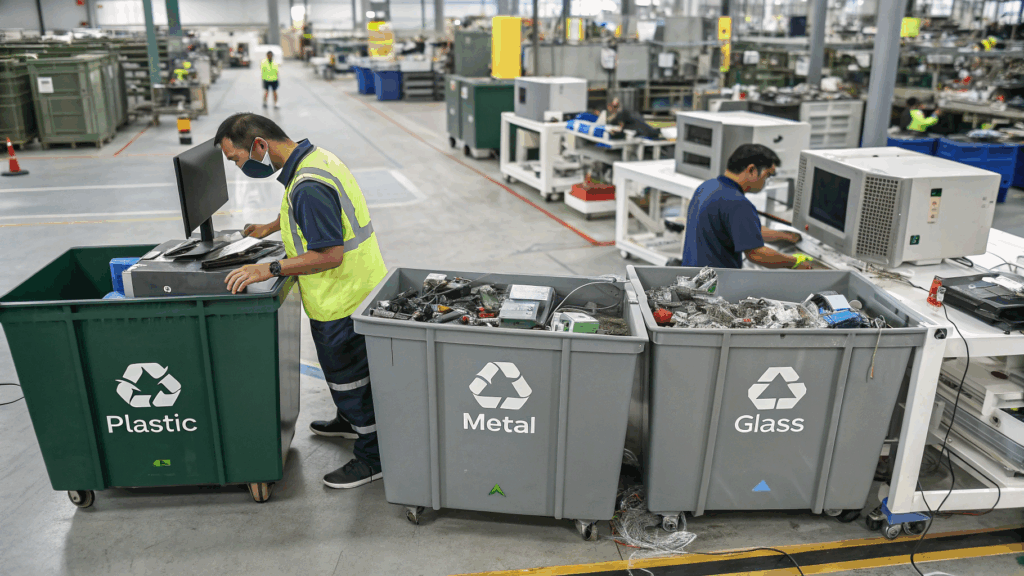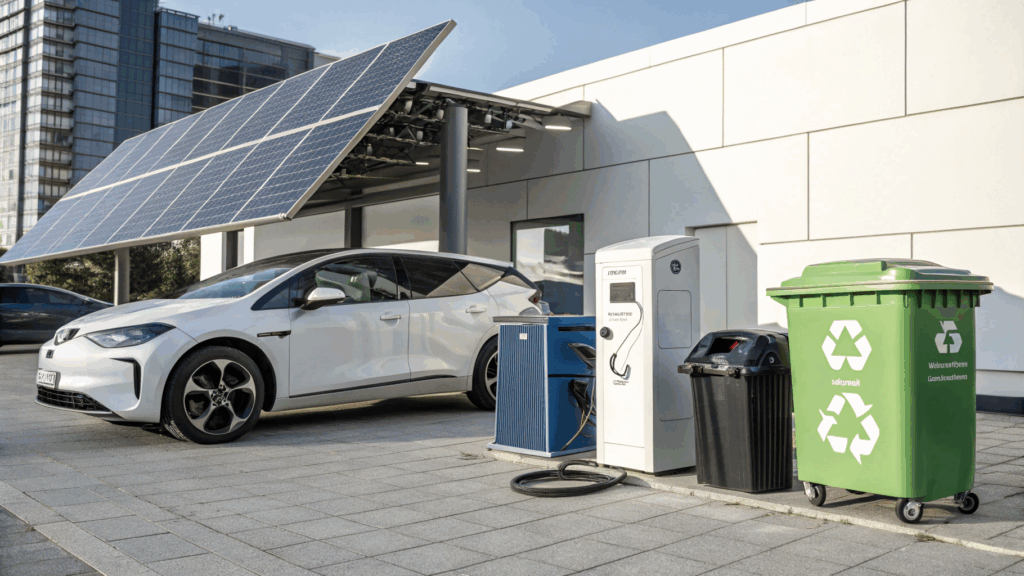The Role of Sustainable Gadgets in Environmental Conservation
Introduction
As the world grapples with the escalating consequences of climate change, environmental degradation, and resource depletion, the urgency to adopt sustainable practices has never been more critical. Among various technological advancements aimed at mitigating environmental damage, sustainable gadgets have emerged as a promising solution. These devices are designed with the principles of sustainability—minimizing environmental impact, reducing energy consumption, and promoting resource efficiency—while maintaining functionality and user satisfaction.
This article explores the multifaceted role of sustainable gadgets in environmental conservation, highlighting their impact on energy efficiency, waste reduction, resource management, and the circular economy. We’ll also delve into the challenges and future opportunities in this evolving field.

Understanding Sustainable Gadgets
Sustainable gadgets refer to electronic devices developed with an emphasis on eco-friendliness throughout their lifecycle—from design and production to use and disposal. Their sustainability comes from various factors such as:
- Eco-friendly materials: Recycled plastics, biodegradable casings, or non-toxic components.
- Energy efficiency: Devices optimized for low power consumption.
- Longevity and modularity: Products built to last longer or easily repaired/upgraded.
- Recyclability: Ease of dismantling for parts and materials reuse.
Examples include solar-powered chargers, energy-efficient smart thermostats, fair-trade smartphones, biodegradable phone cases, and low-energy laptops.
Energy Efficiency and Emission Reduction
One of the primary ways sustainable gadgets contribute to environmental conservation is through energy efficiency. The global ICT (Information and Communication Technology) sector accounts for about 2-4% of global CO₂ emissions, and this figure is expected to grow. Therefore, reducing energy consumption in devices can significantly lower carbon footprints.
Smart Devices for Energy Conservation
Smart gadgets like programmable thermostats, smart plugs, and LED lighting systems help manage energy use in homes and offices. For example, a smart thermostat learns user behavior and adjusts heating or cooling accordingly, which can save up to 20% on energy bills annually.
Similarly, energy-monitoring devices enable consumers to track real-time usage, encouraging more conscious consumption. These gadgets help reduce unnecessary energy expenditure, thereby lowering emissions from power generation.
Resource Management and Material Sustainability
Modern gadgets often rely on rare earth elements and precious metals, the extraction of which is environmentally intensive and often ethically questionable. Sustainable gadget manufacturers are now shifting to more ethical sourcing and utilizing recycled or upcycled materials.
Case Study: Fairphone
The Fairphone is a standout example of a sustainable smartphone. It is built using conflict-free minerals, recycled materials, and has a modular design that allows users to replace or upgrade individual components rather than disposing of the entire device. This reduces both e-waste and the demand for raw material extraction.
Modular and Repairable Gadgets
Another significant innovation is the emergence of modular gadgets, which allow users to replace only faulty parts instead of discarding the entire device. This supports the right-to-repair movement, reducing landfill waste and encouraging a circular economy.
Reducing E-Waste through Design and Recycling

Electronic waste (e-waste) is a growing global crisis. According to the Global E-waste Monitor 2020, the world generated 53.6 million metric tons of e-waste in 2019, and only 17.4% was formally recycled. Sustainable gadgets aim to reverse this trend through thoughtful design and recycling initiatives.
Design for Disassembly
Sustainable gadgets are increasingly being designed for easy disassembly, allowing components to be repaired, refurbished, or recycled. For example, laptops with standardized screws instead of glue make repair and recycling much more manageable.
Recycling Programs and Take-Back Initiatives
Many tech companies now offer take-back programs where consumers can return old gadgets for proper recycling or reuse. Brands like Apple and Dell are investing in robotic disassembly systems that recover valuable materials from returned devices efficiently.
Promoting Renewable Energy Integration
Sustainable gadgets are also playing a crucial role in the transition to renewable energy sources.
Solar-Powered Devices
From solar-powered chargers and lights to water purifiers and even refrigerators, gadgets powered by the sun are transforming energy access in off-grid and developing regions. These devices eliminate the need for fossil fuel-based power, significantly reducing greenhouse gas emissions.
Smart Grids and Energy Storage
Gadgets that support smart grid integration and renewable energy storage—like intelligent inverters, battery management systems, and smart meters—enable more efficient energy distribution and consumption. This helps balance energy supply from variable sources like wind and solar.
Enhancing Sustainable Lifestyles
Beyond direct environmental impacts, sustainable gadgets foster green behavior and environmental awareness among users.
Eco-Friendly Wearables
Wearable tech like fitness bands or smartwatches now often come with sustainability tracking features—measuring personal carbon footprints, promoting green travel options, or tracking water consumption.
Educational Tools
Educational gadgets and apps help raise awareness about climate change, sustainability practices, and eco-friendly habits. These tools are essential in cultivating a culture of conservation among the younger generation.
Corporate Responsibility and Green Innovation
Sustainable gadget development is not solely driven by consumer demand but also by corporate social responsibility and regulatory pressure.
Corporate Sustainability Commitments
Tech giants like Apple, Google, and Samsung have committed to reducing their environmental impact. Apple, for instance, has pledged to become carbon neutral by 2030 and already uses 100% recycled aluminum in many of its devices.
Green Certifications
Certifications like Energy Star, EPEAT, and TCO Certified help guide consumers toward sustainable choices. These standards encourage companies to meet strict environmental criteria in their product design, manufacturing, and supply chain.
Challenges Facing Sustainable Gadgets

Despite the benefits, the journey toward truly sustainable gadgets is not without hurdles.
1. Cost and Accessibility
Sustainable gadgets often come with a higher upfront cost due to eco-friendly materials and ethical manufacturing processes. This can make them less accessible to low-income consumers and developing markets.
2. Technological Limitations
Designing devices that are both high-performing and eco-friendly can be a balancing act. Limitations in biodegradable materials or renewable power efficiency can hinder widespread adoption.
3. Consumer Behavior
Fast consumerism and the desire for the latest tech can undermine sustainability efforts. Extending gadget life spans depends not only on product design but also on shifting consumer habits.
Future Outlook: The Path Forward
As technology evolves, the potential for sustainable gadgets to revolutionize environmental conservation will grow. Here’s what the future may hold:
1. Circular Economy Integration
The shift toward a circular economy, where resources are reused, refurbished, and recycled indefinitely, will be crucial. Companies are investing in circular design principles to minimize waste and resource extraction.
2. Bio-Based Electronics
Research into bioelectronics—using organic, biodegradable materials—could lead to fully compostable gadgets in the future. This could dramatically reduce e-waste and pollution.
3. AI and IoT for Sustainability
Artificial intelligence (AI) and the Internet of Things (IoT) can optimize energy usage, monitor environmental conditions, and support smart agriculture, making these tools essential for long-term conservation strategies.
Conclusion
The rise of sustainable gadgets represents a powerful intersection of technology and environmental stewardship. From reducing energy use and managing resources to minimizing waste and encouraging responsible consumption, these innovations are shaping a more sustainable future. However, achieving their full potential requires systemic change—in manufacturing, policy, and consumer behavior.
As both producers and consumers of technology, we hold the power to drive this transformation. By choosing sustainable gadgets and supporting companies that prioritize environmental responsibility, we contribute not only to conservation efforts but to the broader fight against climate change. In a world increasingly defined by its ecological footprint, embracing sustainable technology isn’t just an option—it’s a necessity.

